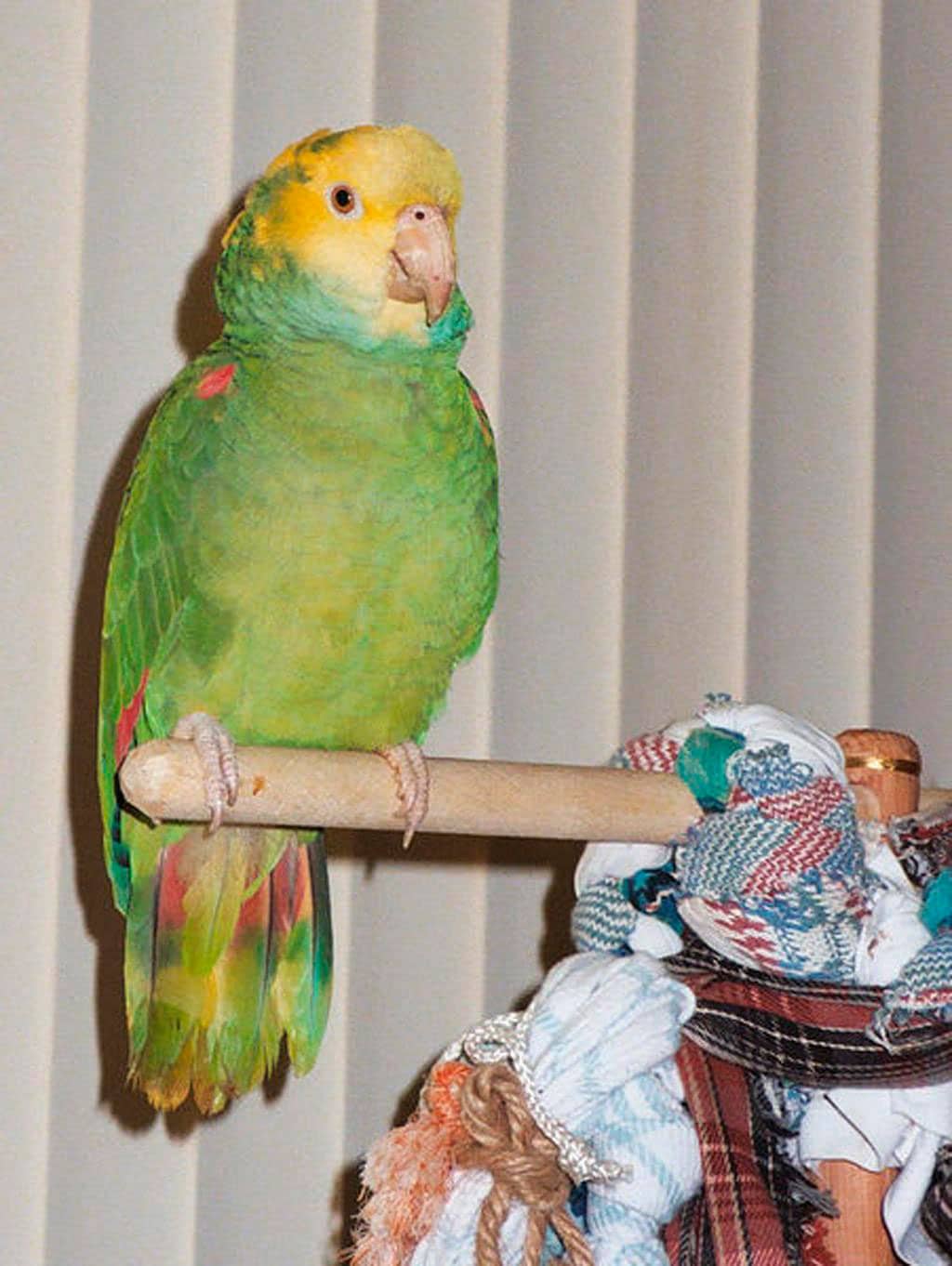Content |
|---|
Description
25 cm.. length and a weight between 160 and 195 g..
The Singing Parrot (Geoffroyus heteroclitus) they have the head bright pale yellow.
A band Large blue-gray adorns the back of neck and gradually it fades in green on the the mantle. The throat is bluish grey. All upperparts are light green. The median stained reddish brown. You can see the pale yellow stripes on the innerwebs of the flight feather. The underparts is bright blue. Upper chest is blue-gray, which contrasts with the rest of the underparts, that are of a much lighter green back. The upper part of the tail is green. The bottom of the tail is grey, but with a slight yellow color in the outerweb external feathers tail.
The upper jaw is of color yellow pale, the dark gray lower jaw. The irises are yellow, the legs gray-green.
The sexes are dimorphic. The female has a bill totally dark. Yellow beginning of the head and neck greenish blue are away. In its place, the top It is gray and cheeks They are brownish green.
Immature show greener on the head than females. Its bill is paler and its irises dark.
- Sound of the Singing Parrot.
Description 2 subspecies
-
Geoffroyus heteroclitus heteroclitus
-
Geoffroyus heteroclitus hyacinthinus
(Mayr, 1931) – Males have neck gray violáceo.
Habitat:
The Singing Parrot frequent humid lowlands, undisturbed, Hills generally below and of the 600 meters up to a maximum of 1.760 meters in the South of New Ireland . They are also partially cleared areas, at the edge of forests, in stands of trees in regeneration and in gardens.
The birds, often, they are heard when they make calls from the exposed or isolated trees, or view flying rapidly above the canopy.
They are alone, in pairs, or having relationships in small groups. There have been next to the Cardinal Lory and Duchess Lorikeet in Bougainville. They are often calm and difficult to detect when they remain perched among the dense foliage.
Reproduction:
The nest is a hole dug by the female in a dead tree stump or rotten, but nothing more is known about the breeding ecology of the species.
Food:
The diet It includes seeds, fruit, flowers and buds.
Distribution:
Size of the area of distribution (reproduction / resident): 576.000 km2
The Singing Parrot They are endemic Bismarck Archipelago and Solomon Islands. These birds are found in the following Islands: Umboi, New Britain, Lolobau, Duke of York, New Ireland, New Hanover, Tabar, Lihir, Buka, Bougainville (Papua New Guinea). It can also be seen in Choiseul, Santa Isabel, San Jorge, Malaita, New Georgia, Guadalcanal and all the little Islands Rennell (Solomon Islands).
Distribution 2 subspecies:
-
Geoffroyus heteroclitus heteroclitus
-
Geoffroyus heteroclitus hyacinthinus
(Mayr, 1931) – present only in the Rennell island.
Conservation:
• Current category of the Red List of the UICN: Least concern.
• Population trend: Stable.
The world population it is generally estimated at just less than 100.000 specimens.
The subspecies that lives in Rennell Island is between 5.000 and 20.000 birds.
The Singing Parrot It suffers from the degradation of habitat throughout its area of distribution, but is not in danger.
"Singing Parrot" in captivity:
Extremely shy and touchy; they may die suddenly without discernible cause, possibly due to stress and improper diet.
Not commonly found in poultry.
Alternative names:
– Singing Parrot, Song Parrot (ingles).
– Perruche hétéroclite, Eclectus hétéroclite, Éclectus hétéroclite (French).
– Bismarckpapagei (German).
– Geoffroyus heteroclitus (Portuguese).
– Lorito Cantor, Lorito Heteróclito (español).
scientific classification:
– Order: Psittaciformes
– Family: Psittaculidae
– Genus: Geoffroyus
– Scientific name: Geoffroyus heteroclitus
– Citation: (Hombron & Jacquinot, 1841)
– Protonimo: Psittacus Geoffroyi heteroclitus
Images "Singing Parrot"
Videos "Singing Parrot"
————————————————————————————————
“Singing Parrot” (Geoffroyus heteroclitus)
Sources:
– Avibase
– Parrots of the World – Forshaw Joseph M
– Parrots A Guide to the Parrots of the World – Tony Juniper & Mike Parr
– Wikipedia
– Photos:
(1) – Birds-pet-wallpapers
– Sounds: Mark Todd (Xeno-canto)


